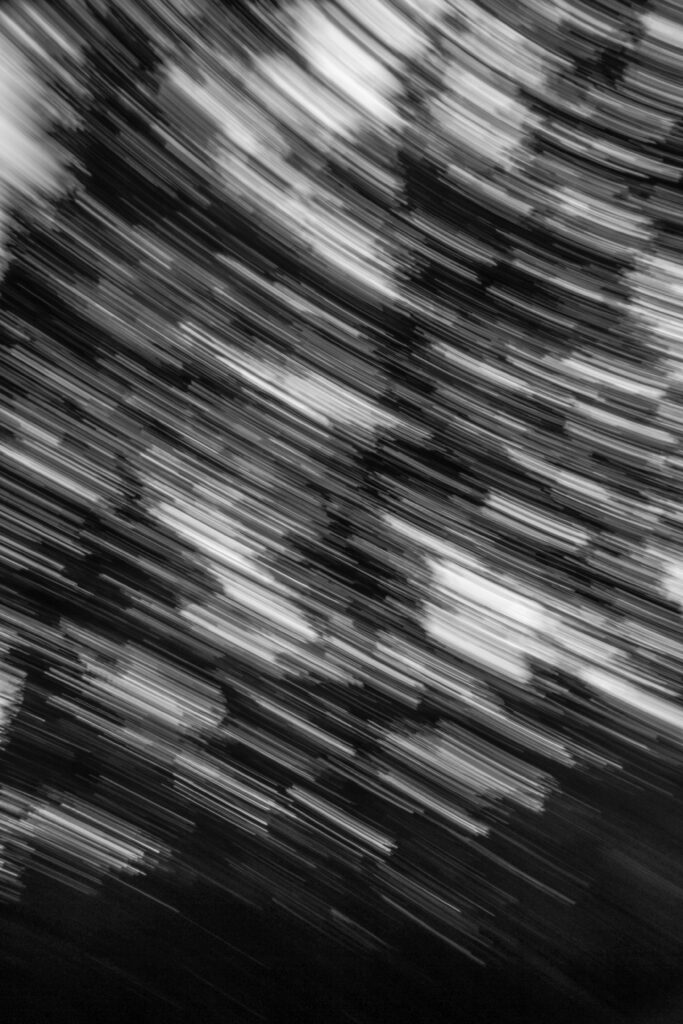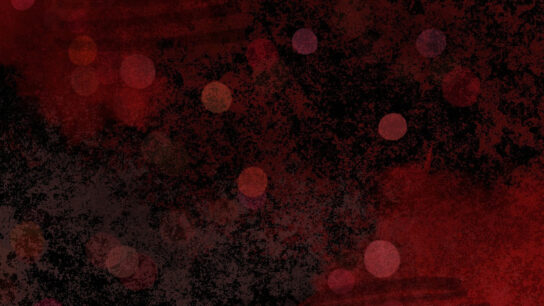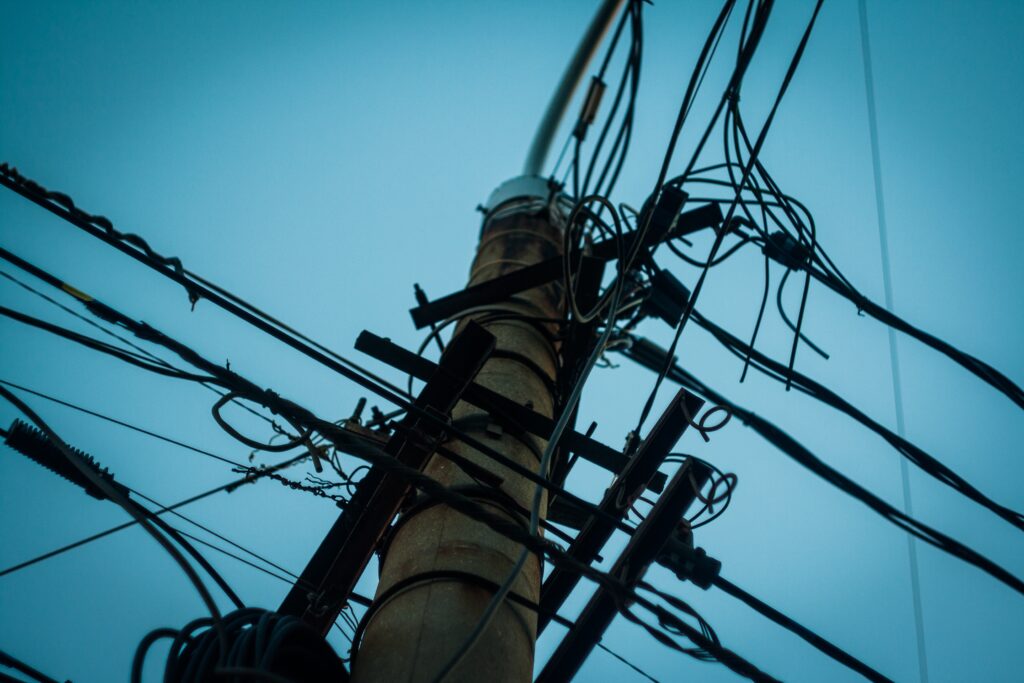Incivilities of Sound and Sense: Rumor as Cacographic Violence and Internal War
by
Static and Stasis
The counterfactual sound byte, a technocratic aphorism for phobogenic rumor, has bisected the public use of (un)reason with numerous incivilities not for the first or last time. Rumor, etymologically and historically linked to discordance and cacophony, derives from Indo-European etymons evoking sonic emergency and disruption such as the Sanskrit ruvati, “roars”, and the Hellenic ωρύομαι, “to howl”. In medieval French, rimur or remeur (circa 1100) referred to the clamor of a marching army. Associated with hearsay by 1264, remeur also denoted uprising, tumult and outcry (1407). These usages indicate that rumor installs a phobogenic and divisive soundscape within the speech economy of a polity; rumor in its content and circulation diffuses a sensorium of fear that displaces the concordance of discursive euphony with interruptive cacophony.
For Michel Serres, discursive consensus, veridiction, scientific facticity, and related transparent modes of transmission are generated through the phobic elimination of impinging noise or “cacography”, from communicative and archival circuits. “Let us call noise the set of these phenomena of interference shared that become obstacles to communication. Thus, cacography is the noise of graphic form …” (Serres). Juxtaposed against hierarchies of credibility and their sanitized channels of transmission, rumor, as enunciated counterfact, is cacographic. Serres inventories such communicative pathogens as media of interference: “stammerings, mispronunciations, regional accents, dysphonias … cacophonies … background noise, jamming, static, cut-offs, hysteresis…”
These special effects are divided against themselves in being communiqués prone to postal misarrival as the dead letters and destituent detouring of sound and signification (Serres). This anarchy is irreducible to mere technical deficiency; such emissions are syntactical deviations from how signals and concepts are routinely linked that can be re-encountered in rumor-mills. These channels of non-sense should be reassessed as cultural techniques of discursive stasis and incivility that transmute the rumble of rumor into itineraries of political dismediation. The term stasis references the classical Greco-Latin concept of an agonistic division and/or paralysis of a polity as well as the progression of a disease through a body, including a body politic. Stasis invokes the Latin cognate, sēditiō (sedition), a going aside, a going apart, and insurrectionary separation.
Bodily Breakdowns
The discomposure of rumor belongs to Alfred Sohn-Rethel’s technicity of the broke-down: “it is only when things are broken that they begin to work … What is conceived as technical is that which really begins where man makes use of his veto against the closed and hostile automatism of machines and plunges himself into their world. He does not take control of the machines by studying the manuals and learning how to use them, but by discovering his own body inside the machine.”
Only when a discursive political culture is broken, divided against itself, at war with itself, do we begin to discern how it works and discover how our bodies are held hostage to its machinality. The authority and indivisibility of the deja dit, the machinery of the already said, of doxa, requires the purging of cacography—the unsayable and the unthinkable—in order to automate the purring mechanisms of fidelity, repetition, and reality solidification. Rumor, as a relation of noise to signal, is parasitical upon the deja dit, vetoes it, exposes its automatism and its hidden inoperativity by referring it back to those inadmissable bodies shut away and silenced within the facticity machines of the self-evident and the axiomatic.
“What is more bifurcated than a body that consumes itself through contaminated commodity consumption?”
Both Gayatri Chakravorty Spivak and Homi Bhabha have explored the anti-canonical character of rumor, its relation to the production of phantasmagoria and its subversion of colonial modalities of subjectification and realist depiction. Spivak writes of the epistemological role of rumor in the work of the Subaltern Studies group: “I would submit that it is more appropriate to think of the power of rumor in the subaltern context as deriving from its participation in the structure of illegitimate writing…rumor is not error but primordially (originally) errant, always in circulation with no assignable source. This illegitimacy makes it accessible to insurgency …” Homi Bhabha links rumor to the phantasmagoric through “the performative rhetoric of circulation/panic”, which mobilizes a host of “slender narratives.” Rumor and panic refract and give birth to “the unheimlich space for the negotiation of identity and history.” For Bhabha the “unheimlich”, i.e. the phantasmal, and the uncanny, originate in the eminently anti-realist historical terrain of “the not there”, the “excluded, excised evicted.”
Patricia Turner detects the cacography of the black body as it navigates its captivity in the broken machinality of post-slavocratic racial subjugation. She writes African-American rumoring institutes “the bodies of blacks as disputed terrain.” Black rumor prognosticates that “the dominant culture remains intent on destroying blacks—one body at a time” (Turner). African-American rumoring stages American race war at the frontiers and orifices of the black body. This warfare is exemplified by pervasive and longstanding rumors of American fast food chains covertly targeting black consumers with toxic cuisine. What is more bifurcated than a body that consumes itself through contaminated commodity consumption?
For Turner, African-American rumor orchestrates escapes from the bondage of a racially stratified communication and consumption economy. These persistent rumors of conspiratorial collective poisoning eventually proved to be diagnostic and prognostic. They were actualized by the racialized infrastructure of the contaminated water delivery system of Flint Michigan. Some rumors dream uncivil truths.
Signal/Noise, Veridiction/Verifiction
Noise elimination advances the dematerialization and disembodiment of media that occludes the infrastructures and related preconditions of credibility production that also align dominant media with the counterfactual. Hiding the contingency of their becoming underwrites both rumor-mills and major media platforms. Rumor-noise is generated as the subversive mimesis of facticity regimes. The latter harbors a cacography which Michel Foucault names “the falsification that calls itself [the] opposition of the true and the false.”
Rumor renders this falsification hyperbolic through parodic emulation. Foucault’s rejection of the binary of the true and the false that undergirds veridiction infers verifiction, or what Derrida calls “actuvirtuality” (Derrida and Stiegler). Verifiction is inversely diagnostic of prevailing and no longer reassuring regimes of truth-saying. The fear in rumor is recursive; hearsay in its sheer circulation as verifiction invariably threatens to implode extant regimes of veridiction—rumor is perhaps the oldest form of metadata in functioning as decentering and elliptical information about what is accepted as information.
Patricia Turner engages Black rumor as a forensic diagnostic of a racialized order against which the purveyors seek preemptive protection of their bodily boundaries and that of their community. However, the governmental fetishization of security treats those same vulnerable black bodies as cacographic—as an intrinsic “super’ predatory incivility, that in the infamous words of Hillary Clinton must be “brought to heel.”
Jacques Rancière identifies a signal/noise phobia in Aristotle’s fault-line of logos/phone, reason and voice, that is constitutive of such (in)civil warfare that is today codified and mystified as policing, the war on drugs, and racialized mass incarceration:
Aristotle makes a distinction between those who possess language and those, like slaves, who can only understand … the possession of language is not a physical capacity. It is a symbolic division … between the order of speech and that of bodies … Traditionally, it had been enough not to hear what came out of the mouths of the majority of human beings—slaves, women, workers, colonized peoples … as language, and instead to hear only cries of hunger, rage, or hysteria, in order to deny them the quality of being political animals.
For Ranciere the political arises at the concussed fissure and agonistic play of reason and resonance as a zone of subjugated/subjugating insensibility. Here, political communicability is a checkpoint guarding an anthropological invariant and property—the logos—that is deaf to the part with no part (in the polity), such as Hegel’s rabble. Ranciere’s part with no part and the Hegelian rabble literally embody cacographic abjection. For Hegel, the rabble a is socially-toxic formation, rumored to emit the olfactory-somatic “noise” of decay (verfaulen) foulness (faulheit), rot and stagnation (faulnis) that register the signal-decay of the axiomatic norms forcibly transmitted to these forms of life by the socio-ethical order (Ruda). In Hegel the rumor of the rabble stands for the self-amputation and self-scarification of the body politic—its dis-organ-ization that decays into dispersed societal organs that are severed from the whole. Frank Ruda calls the rabble the excremental exudation and the unbonded of civil society. With the rabble, Rancière’s politics of “the part with no part” appears at the abyss where the communicable and its contaminants—the incommunicable—converge and repel each other. Cacography is the determination in negation of a political order founded on the excised clamor and the foreclosed interlocution of the ex-communicated and the inadmissible. With the rabble as with rumor, civil society is internally marked by a lack that it cannot overcome. The rabble are structurally associated with rumor for they know without being permitted to know something—that civil society in producing the rabble has externalized something that it cannot recognize. The rabble as the object and media of rumor embody Foucauldian “subjugated knowledge.”
 Michel Serres describes a related cacographic fission that anticipates Ranciere: “To hold a dialogue is to suppose a third man and to seek to exclude him, a successful communication is the exclusion of the third man. The most profound dialectical problem is not the problem of the Other, who is only a variety—or a variation—of the Same, it is the problem of the third man. We might call this third man the demon, the prosopopeia of noise.” A demonic prosopopeia is a fear-provoking auditory mask, the representative of phobogenic representation. A demonic prosopopeia points to a rumored yet intimate absentee who threatens through obtrusive cacography. Serres follows Franz Kafka in identifying cacography with a rumor of sound that lacks any identifiable source.
Michel Serres describes a related cacographic fission that anticipates Ranciere: “To hold a dialogue is to suppose a third man and to seek to exclude him, a successful communication is the exclusion of the third man. The most profound dialectical problem is not the problem of the Other, who is only a variety—or a variation—of the Same, it is the problem of the third man. We might call this third man the demon, the prosopopeia of noise.” A demonic prosopopeia is a fear-provoking auditory mask, the representative of phobogenic representation. A demonic prosopopeia points to a rumored yet intimate absentee who threatens through obtrusive cacography. Serres follows Franz Kafka in identifying cacography with a rumor of sound that lacks any identifiable source.
Mladen Dolar, reading Kafka’s story The Burrow, maps the enigmatic noise that haunts the bunkered burrow-dweller like a fear-provoking rumor rupturing spatio-temporal continuity triggering the necessity of surveillance, i.e. tracking the incommunicable back to an objective source which proves fruitless: “The ability to locate the sound is like the test of sanity, for if one cannot do so, one stands on the brink of delusion, of hearing voices, of an incapacity to make sense of the world at large. One stands on the verge of an abyss, where the temporal is suspended and refuses to converge into space” (Dolar). The Burrow is a story about rumor and securitization, about information about sonic information that happens to be incomputable. The temporal and spatial errancy of cacophony in the burrow amplifies phobic affect and is opposed to visuality, which seeks to affix sonic errancy to a location and an analogue author.
“ Rumor is perhaps the oldest form of metadata in functioning as decentering and elliptical information about what is accepted as information. ”
Disembodied sonority is a mode of sousveillance, a look from/of the outside that has now entered the interior as an uninvited guest, as the acoustic mask of an unreturnable regard that is everywhere and nowhere. The lack of delimitable content and locus in cacographic transmission indexes an exteriority whose dislocation reverberates uncertainty—an X from which the outside as emergent event is derived as the border of a border. Cacography is the experience of the outside that has become anxiously internal. Its sonic misarrival unfolds “an absence of horizon [that] is not one that has no horizon at all; it’s where the horizon is, in a sense, ‘punctured’ by the other. With the coming of the other there is a non-horizon” (Derrida).
Cacographic Bodies
The political terror of rumor is somaticized as the dream of the executioner borne within the targeted body.
Here embodiment is doubled: anticipated victimizer and potential victim are intermingled in the same form. The body vectored by rumor becomes transitive and dispersed, a volume in perpetual disintegration through the conjuncture of chance and finality. Interrogation by torture, promissory death lists, prosecutorial algorithmically generated metadata, drone dwell time, and anticipated political disappearances eventually become rumor materially enacted upon and archived in enlisted bodies, which, in turn, become rumor when they are initially scarred by promissory violence while living, and then subsequently disappeared as the illegally detained, the anonymously buried, and the uncounted collaterally damaged.
Can we access the micro-grammar of a terrorizing cacography that is conveyed by unvoiced gesture and furtive expression from body to body in the everyday ‘silent’ contact that occurs within and yet annotates the rumor of surface normalcy? This is an intertextual, intestinal, and discordant cacography wherein each body subjected to rumor is both itself and another commissioned with the body’s promissory termination. When the state is the purveyor of rumor and verifiction, this haunted, and occupied body becomes a cacographic archive of executive power whereby rumor-affect is sunk into the body as a rationality of the state. Jacques Derrida speaks of such bodies as insectum, meaning a cutting into and resectioning of a body; to insect is to separate, to dissect, to intersect, and to hunt and catch insects. Simone Weil wrote of the (dis)embodiment generated by rumor and promissory violence:
It will surely kill, or it will possibly kill, or perhaps it merely hangs over the being it can kill at any and every moment; anyway, it turns man into stone. From the power of transforming a man into a thing proceeds another power, otherwise prodigious, the power of turning a man into a thing while he is still alive. He is alive, he has a soul; and yet, he is a thing … still breathing, he is nothing but matter, still thinking he can think nothing.
For Foucault, the phantasmal, such as rumor and the phobic, encloses the body within a cacographic sensorium, a somatic stasiology that vectors the body through perceptual vertigo:
It is useless to seek a more substantial truth behind the phantasm, a truth to which it posits a rather confused sign … Phantasms must be allowed to function at the limit of bodies; against bodies, because they stick to bodies and protrude from them, but also because they touch them cut them break them into sections, regionalize them, and multiply their surfaces … Phantasms do not extend organisms into an imaginary domain; they topologize the materiality of the body … they must be allowed to conduct their dance, to act out their mime, as ‘extra beings.’
Foucault’s identification of “extra beings” and their protrusions and striations index the excarnation of rumored terror. This vivisected body suggests Bakhtin’s carnivalesque body politic, wherein “the kitchen and the battle meet and cross each other in the image of the rent body” (Bakhtin). Rumor’s fixation on fragments, part-objects, and montage resurfaces as the dismembered or resectioned body supporting invaded orifices such as those occupied by the racialized logistics of weaponized fast food and toxic aqua-infrastructures. Foreign bodies rent by the grotesque orifices of rumor currently ‘deface’ national borders by arriving like Kafka’s unplaceable cacophony and Rancière’s anomic and animalized noise. Rumor both drives and greets the (mis)arrival of the stateless and rightless in their search for habitus and hospitality.
The sans papier are Foucault’s intrusive and extruding fantasized “extra beings”, Serres’ excluded cacophonic third, and Hegel’s rumored and rotting rabble who now haunt the deja dit of the bordered nation state as demonic prosopopoeia—as Trump’s “Mexican rapists”, as “Islamic terrorists”, and as the bloated bodies of those washed up as wretched refuse and ‘humanitarian’ cacophony on the shores of the EU. In these cases, Serres’ excluded third is the condition of possibility of a phobogenic national conversation.
“The border is itself a rumor as it no longer contains, rather, it expands and inflates, imagines, and consumes bodies that border the border.”
Contemporary phobogenic scopic regimes and xenophobic technologies that preempt or detect unwanted migrancy and presumed terrorists originates in various power-knowledge formations of the 19th century. That period witnessed the emergence of practices of abnormation—somatic typification and anomaly detection—through forensic imaging technologies instituted by the police, prisons, asylums poor houses, and colonial regimes respectively targeting criminals, the mentally disabled, immigrants, the indigent, the racialized, and the primitivized. These figures were juridically, textually, and photographically abstracted from the threatening crowd created by industrial capitalism or cognate colonial pacification. The cacographic body and its circulation became the metadata permitting the detection of the socially anomalous. The narrative aesthetics of contemporary social sciences and regimes of care with their case histories descend from this political technology of the forensic image and its addiction for archiving the cacographic. The medical and social-psychological terminology that brands the body as “presenting” something abnormal to a disembodied, sovereign gaze is indicative of this archival legacy where such bodies are collated into precomprehended collectivities of cacography that require hierarchical observation and compulsory visibility.
The political economy of rumor and the cacographic body compels a rethinking of the border and the security checkpoint as politically required media for phobogenic fantasy. This was recently demonstrated by Trump’s dissemination of a mythography of panic, a state of emergency, concerning the approaching migrant caravan that supposedly harbored Muslim terrorist moles from Al Qaida and ISIS. Here, the Latin American asylum seeker becomes doubly cacographic as the masking façade, the demonic prosopopoeia of the Islamo-fascist sleeper cell. The state no longer maintains borders, external and internal, rather the precarious border maintains the state feeding it with functionalized rumor and instrumentalized fear. Sovereign power replicates itself through the panic of a border spillage; the homeland has shifted its center to the extremities of the border which has become a liquefied frontier traversing the security checkpoint, the dwell-time of the drone over flight, metadata surveillance, orbiting Landsat satellites, the circulating bodies of migrants and asylum seekers, and African-Americans whose bodies must be mastered through immobilization, both murderous and bureaucratic. All these entities support and circulate the border which persists as a phantasm, performance, an instant, and not as a rigid line drawn in the sand. The border is containerized to move it elsewhere in order to preempt metonymic cacographic threats.The border is itself a rumor as it no longer contains, rather, it expands and inflates, imagines, and consumes bodies that border the border. The border, as in Kafka’s Burrow, is neuralgic, nomadic, insecure, and all the more paranoid for its liquefaction.
The cacographic bodies of Michael Brown, Trayvon Martin, Freddie Grey, Philando Castile, and other victims of police homicide became border zones for the visible exercise of racialized state power, for white public space. American domestic and international ‘policing’ is invariably concerned with liquefying the border between law and nonlaw, and ‘domestic’ and ‘foreign’ bodies of color are fabricated through rumor mills that incarnate this zone of indistinction between law and terror upon which racialized state power is based. This is not a matter of personal psychology, but of the requisitioned materiél of power—historically American white public space, both national and transnational, must pass through, and containerize itself in vulnerable bodies of color, rumor, and fantasy in order to display its hegemony over these thresholds of white supremacy.
Today’s wars on terror, both external and internal, are informed by the blood, pain, and fear of excised bodies rendered cacographic. These asymmetrical wars, seeking to purge the interference and cacophony of global asymmetry, return us to the archaic association of rumor with the din of mobilized armies. Can the collaterally damaged, who often lack a name, be considered a cacography of war—the noise that needs to be eliminated to insure the right to jus ad bellum? Are not the collaterally damaged, as fabulations, protrusions, and phantasms of the structuring enemy, indispensable to the prosecution of a war that originated in rumors of WMDs and a modern day “Old Man of the Mountain” and his assassins? The disavowed collaterally damaged are the refuse, the rabble, the demonic prosopopoeia—Serres’ excluded third—and the surplus static that makes polemological exchanges with the imagined enemy possible.
The cacography of the collaterally damaged entails the divorce of exemplified victimage from the adequation machines of war and law that promote the commensurability of political codes, body parts, deaths, and wounds between the collaterally damaged and the structuring enemy who they are rumored to be and effectively surrogate. The collaterally damaged repel the forensics of readability that requires the convergence of victimage with information, knowledge, the control of space and time, and ultimately productivity. The cacographic victim stands for the incommensurable to any transcendental project of reproportioning violence or law that aspires to master the victim either for domination or restorative/retributive justice. The collaterally damaged as war cacography may be countable. However, they are not numerable insofar as numerability implies the exchangeable; i.e. the commensuration and equivalence of each death with another as the civility of war. The just accounting of the collaterally damaged proceeds by cacographic singularity and inconsistency: a series of ones that like rumor can neither be adequated nor totalized in persisting as an incommensurable incivility haunting the civilities of war.




